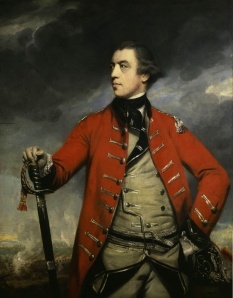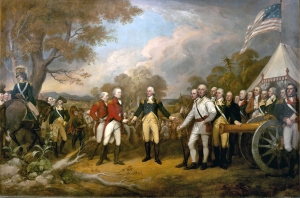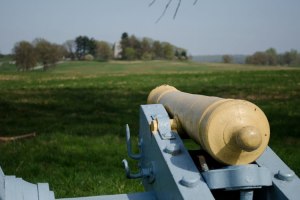The Prodigal Son of artillery pieces has returned home.

This 257-year-old cannon took part in the Battles of Saratoga in 1777, only to be stolen in the 1960s from Saratoga National Historical Park. It was found in an art museum in Alabama.
The New York Times reported a few months ago the long, strange journey of a cannon from the American War of Independence. The six-pounder gun had long sat sleepily in Saratoga National Historical Park, which commemorates the Battles of Saratoga, September-October 1777. But the 555 pound cannon had somehow been purloined sometime in the 1960s. When it went missing, a substitute was brought to Saratoga from the Rutherford B. Hayes Presidential Center in Ohio. About four years ago, a ranger overheard a visitor compare the substitute to one the visitor had seen in Alabama. After following up with this chance connection, National Park investigators discovered that the cannon in Alabama was most likely the one that had disappeared almost 50 years before from Saratoga. The park’s curator, Christine Valosin, set out to prove the cannon’s authenticity and trace its path from 18th century England to 21st century Alabama.

General John Burgoyne by Sir Joshua Reynolds, c. 1766; now in the Frick Collection in New York City. The cannon was part of Gen. Burgoyne’s army.
The cannon began on the side of the British; it was cast outside of London in 1756 during the Seven Years’ War. It was then transported to Canada in 1776 for service in the American War of Independence. The gun was in General John Burgoyne’s army, along with 17 other six-pounders, as it traveled from the province of Quebec to the Hudson River valley in what would become known as the Saratoga campaign. The American General Horatio Gates and the Continental Army defeated General Burgoyne and the British during engagements on 19 September and 7 October 1777; Gen. Burgoyne surrendered to Gen. Gates on 17 October, and this gun passed into the hands of the Americans.

General Horatio Gates by Gilbert Stuart, 1793-1794. Now in the Metropolitan Museum of Art in New York City.
After the war, it was used for coastal defense in New York during the War of 1812. In the early 20th century, the gun was moved to Prospect Park in Brooklyn New York City, in order to commemorate the Battle of Long Island, fought on 27 August 1776. Then in 1934, a historian by the name of Thomas J. Hanrahan petitioned New York City to send the cannon to Saratoga; the request was ultimately successful. The gun was kept in a barn near the upstate battlefield until it disappeared sometime in the 1960s.
The trail gets murky here, given that thieves are less likely to document their activities scrupulously. The cannon was at an amusement park in Gloversville, NY, 40 miles away from Saratoga. Collectors in Connecticut and Florida handled it before it ended up at the Tuscaloosa Museum of Art in Alabama in the 1970s, where it had remained until 2013. The cannon was returned to Saratoga National Historical Park and re-dedicated there in November 2013.

Surrender of General Burgoyne by John Trumbull (1821), which hangs in the U.S. Capitol Rotunda in Washington, D.C. The painting prominently features a cannon on the right side, in the American camp.





